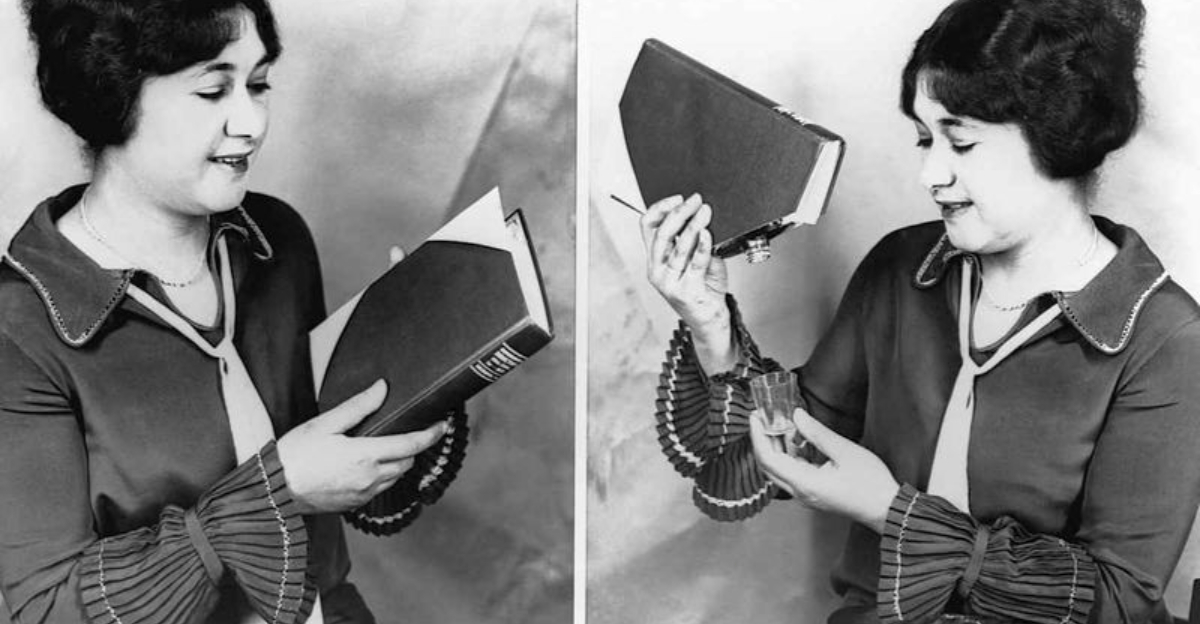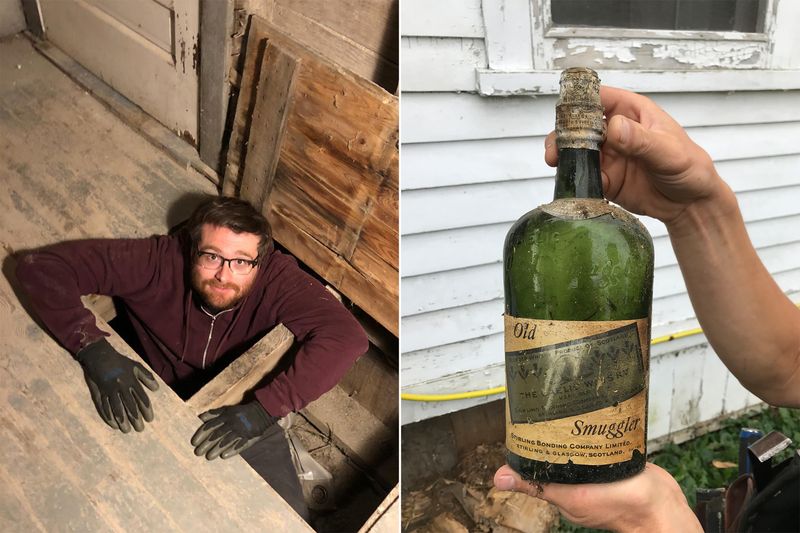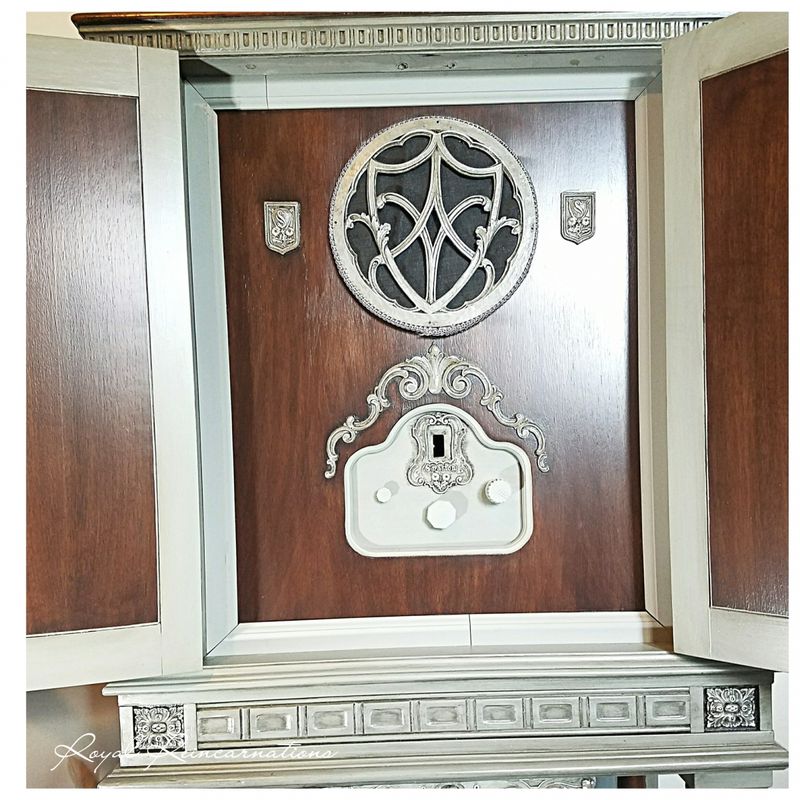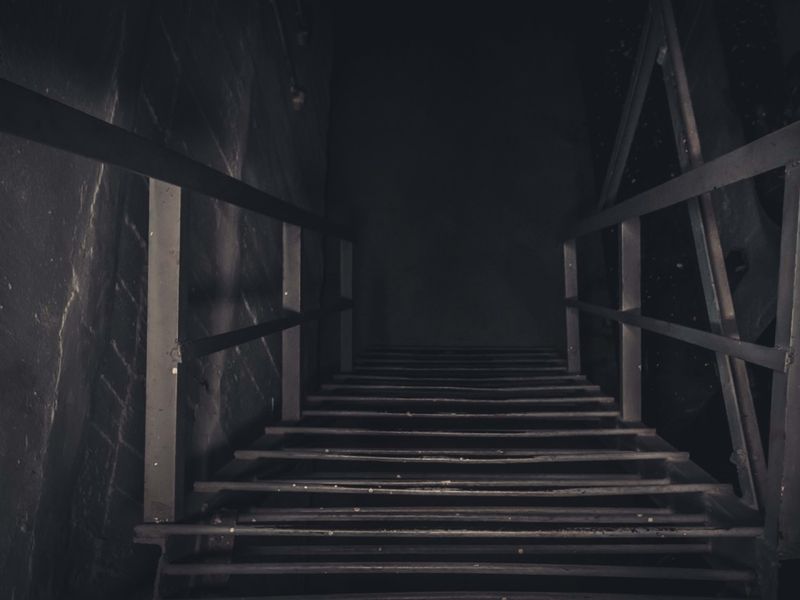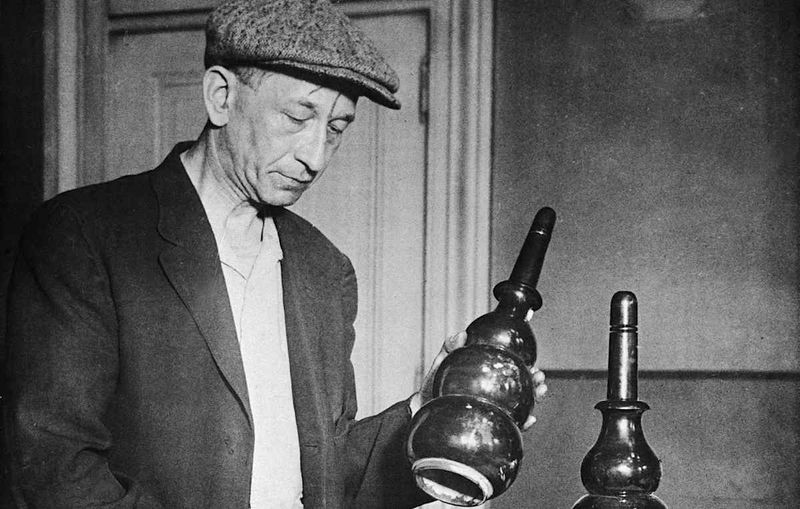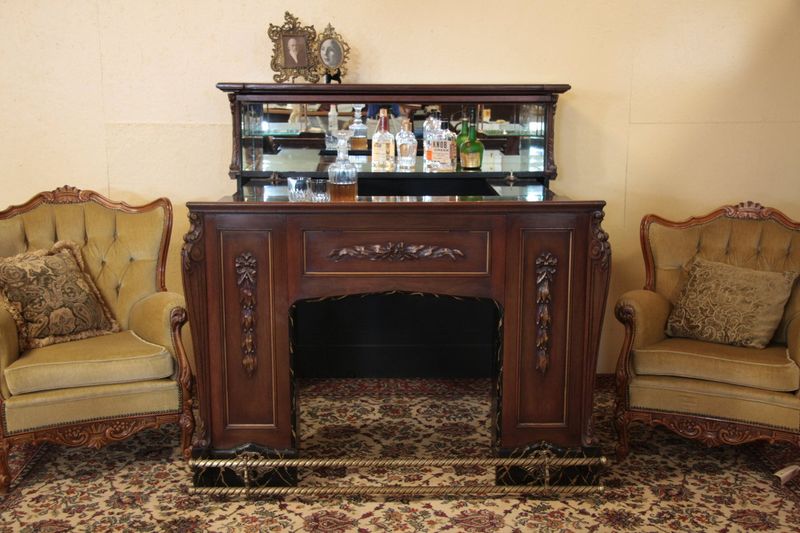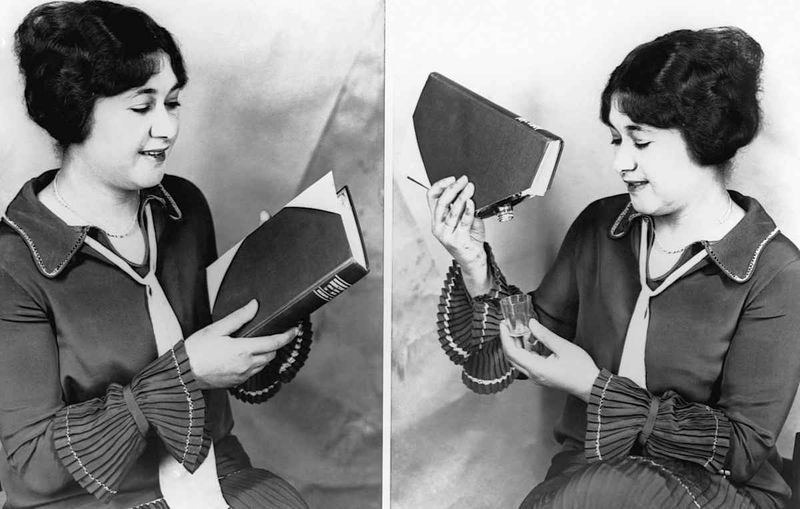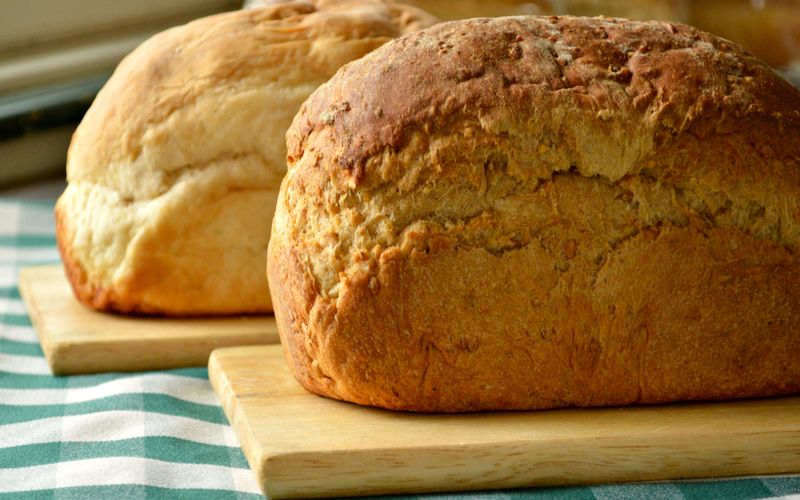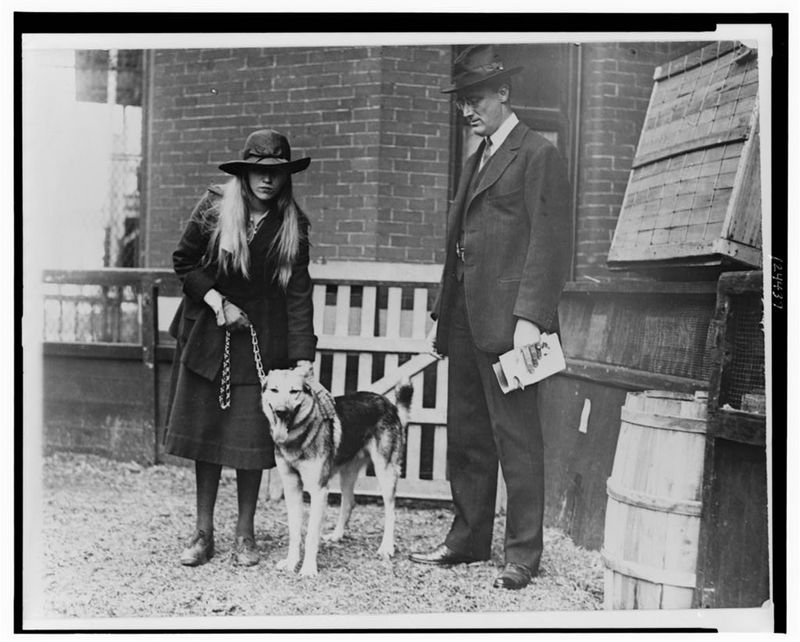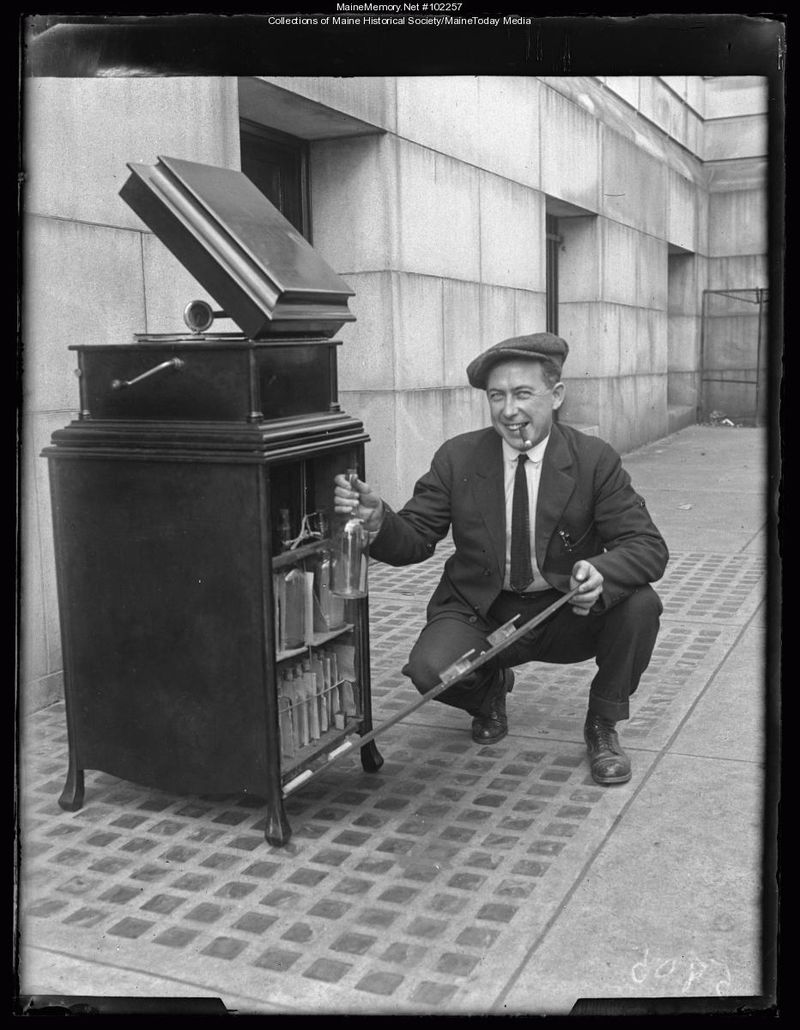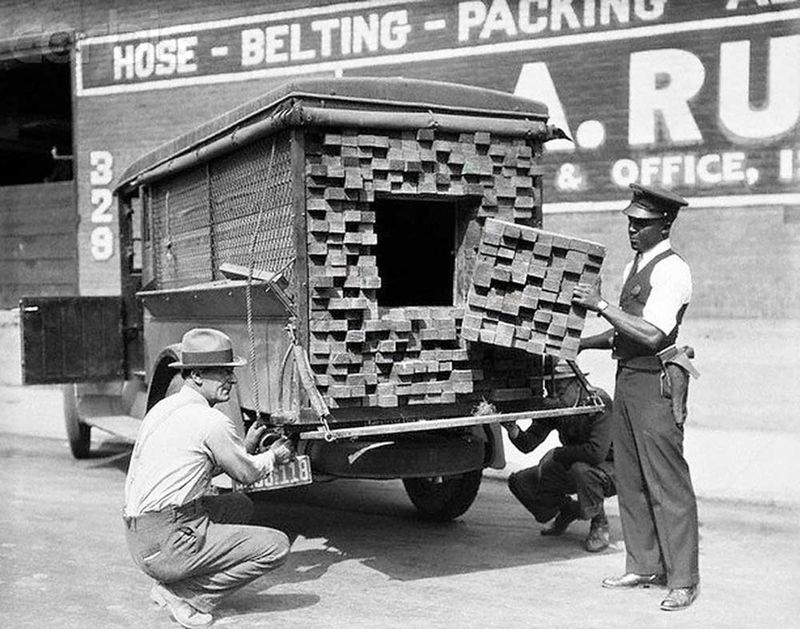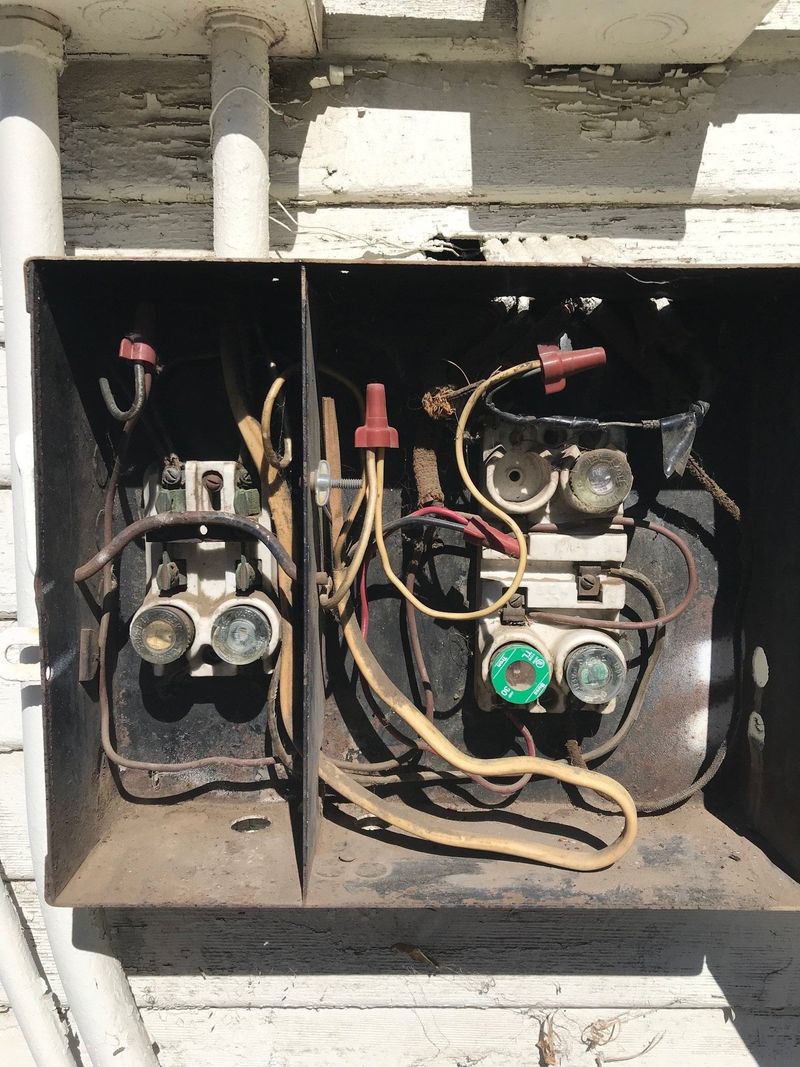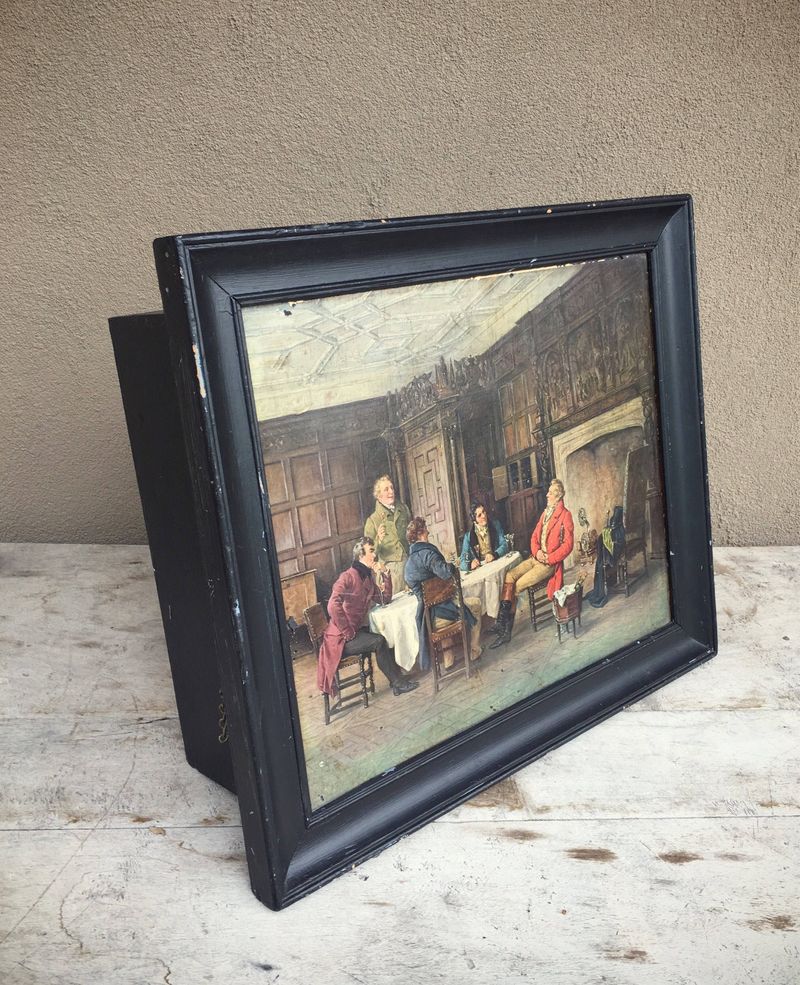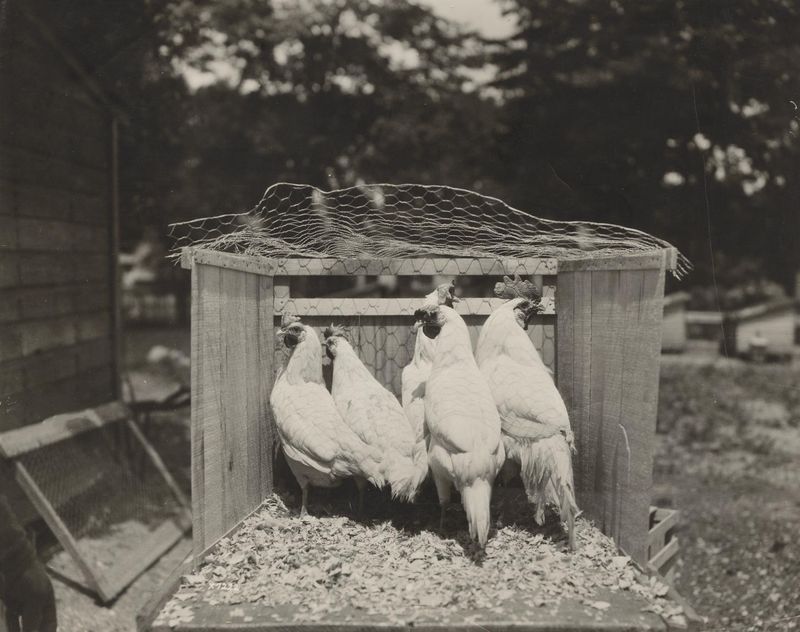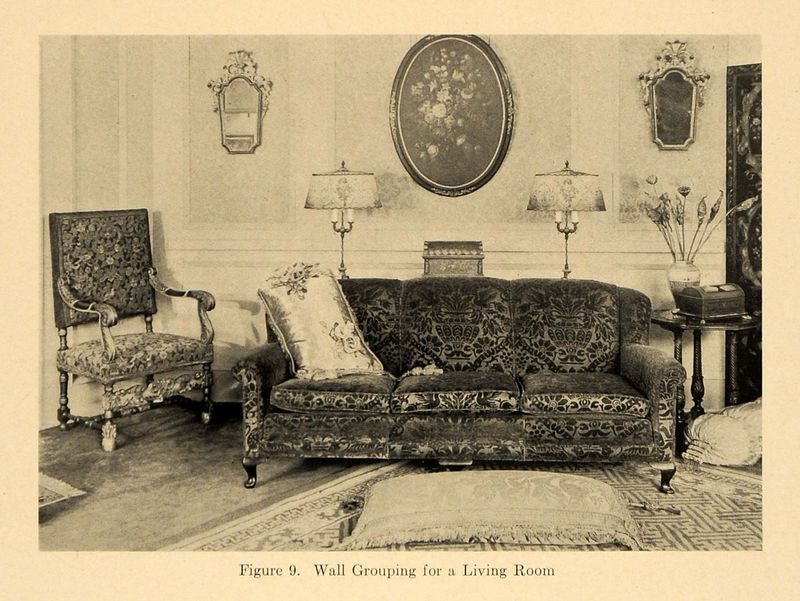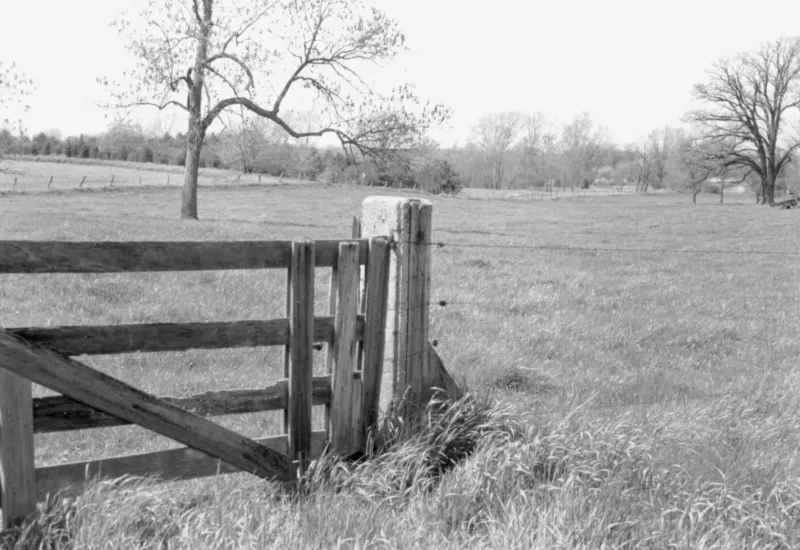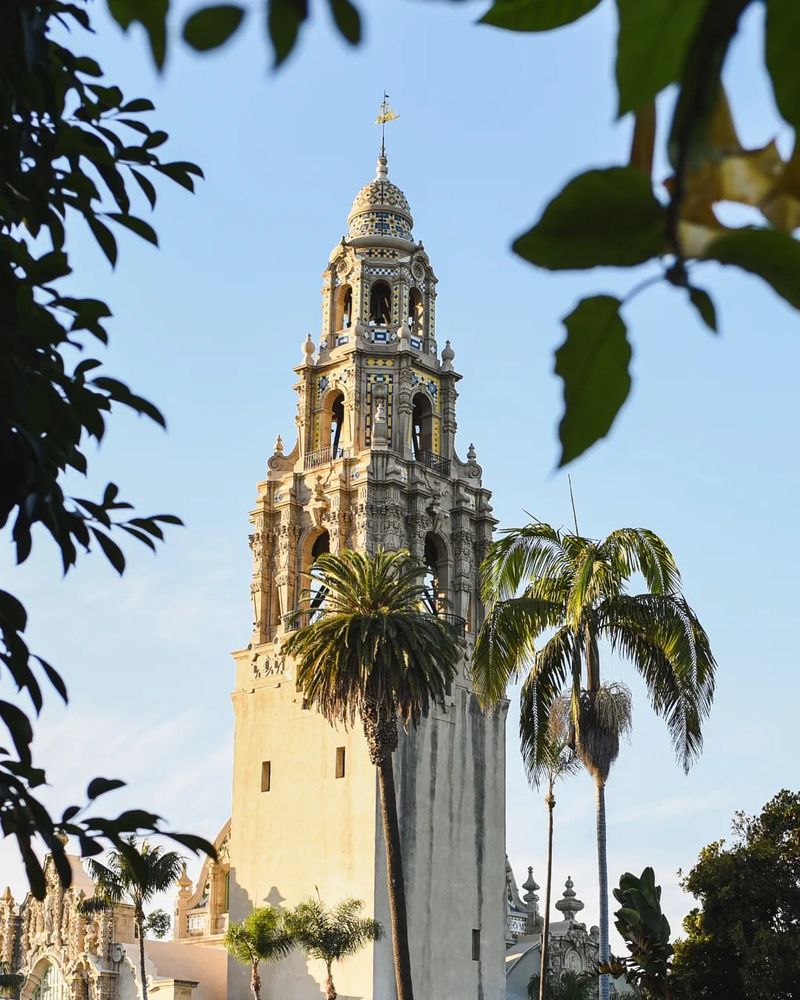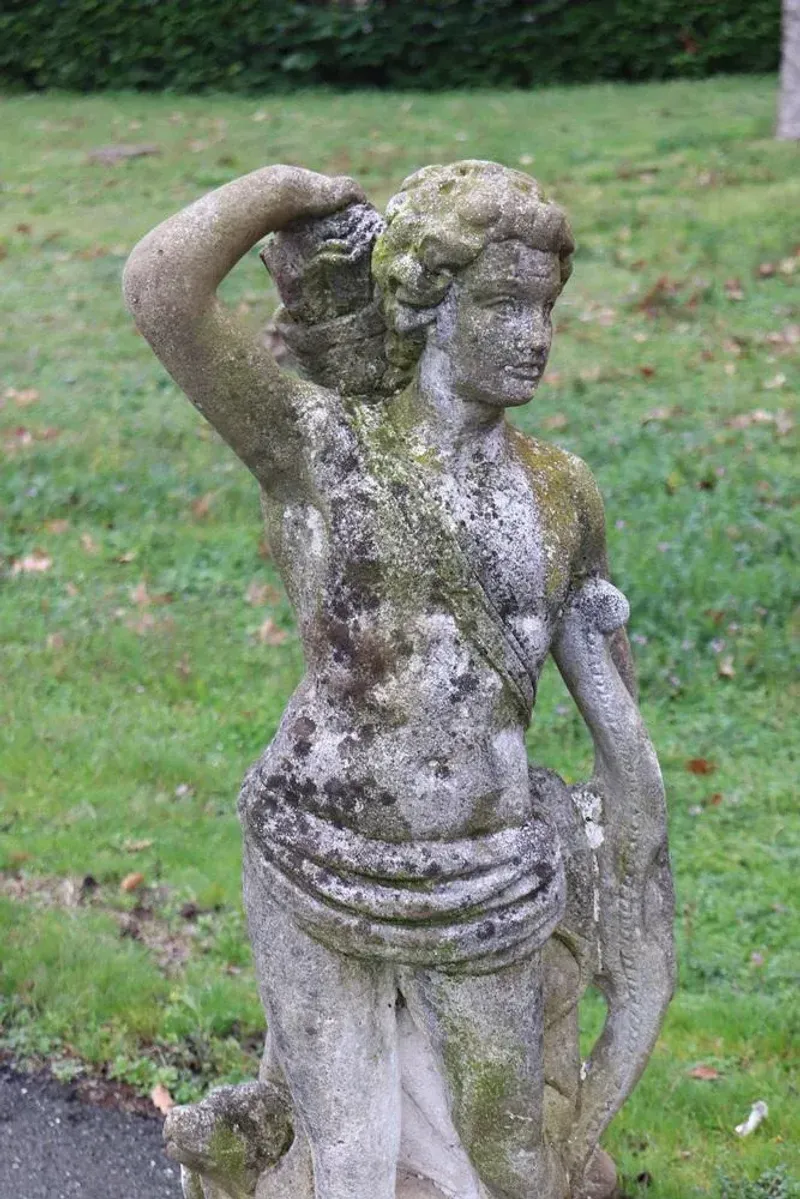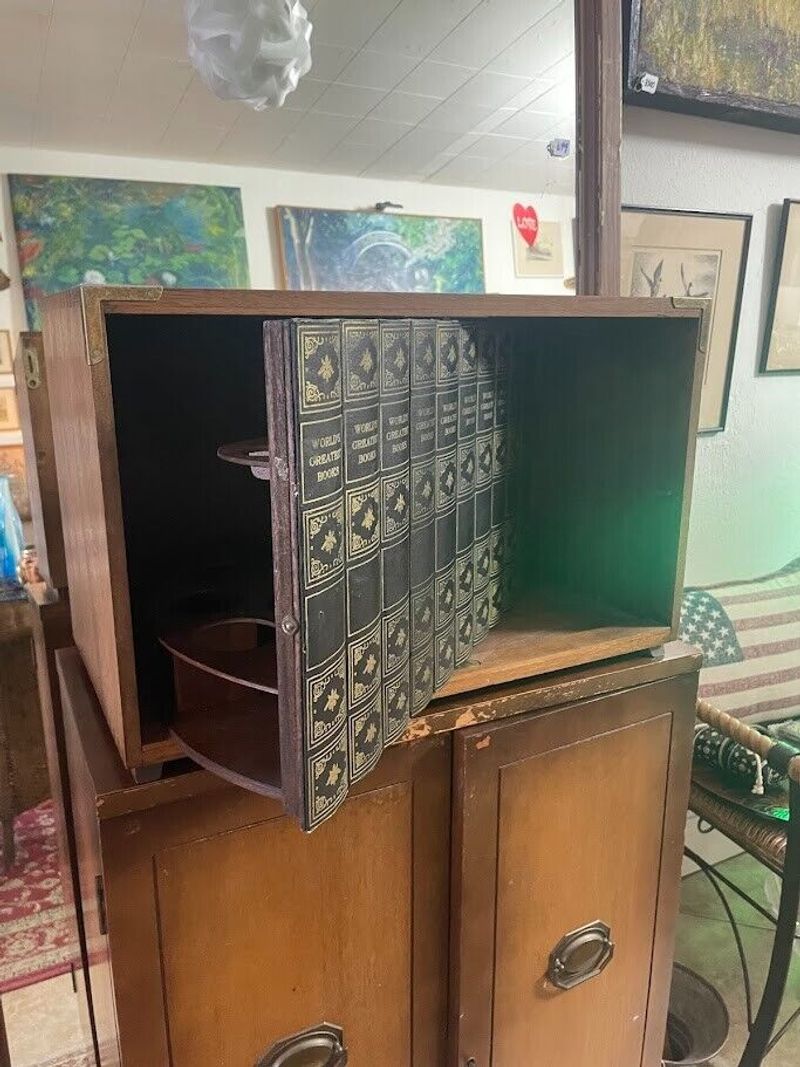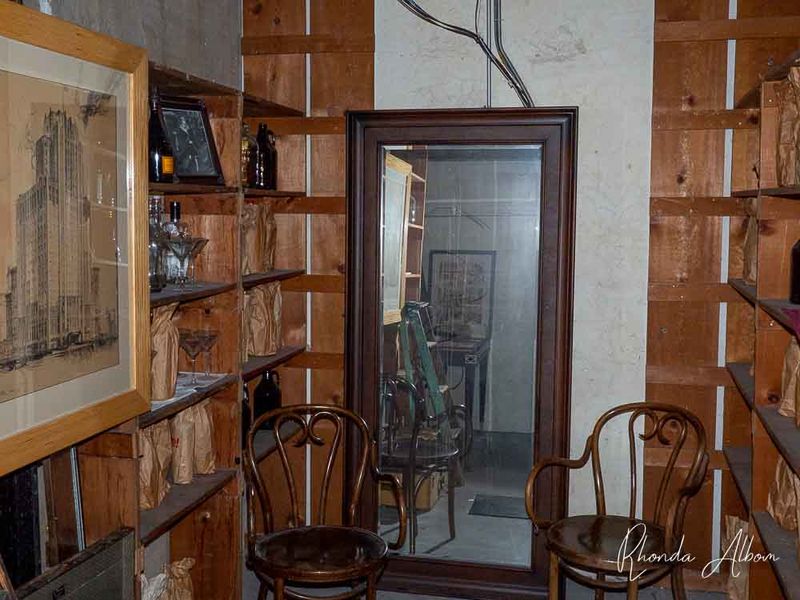During Prohibition, when alcohol was outlawed in the U.S. from 1920 to 1933, bootleggers and everyday citizens got wildly creative. To keep the drinks flowing, they built hiding spots so clever, even the authorities couldn’t crack them. Here are 19 of the most ingenious places booze was stashed—many of which were only discovered decades later.
1. Under Floorboards with Spring-Loaded Latches
Tap just the right board in the living room, and it would pop up to reveal a cache of bootleg whiskey. This clever mechanism was not only discreet but offered a sense of adventure. Families would sometimes keep these secrets from even their closest friends, adding to the air of mystery. The ingenuity of these hiding spots highlighted the lengths to which people would go to enjoy a simple pleasure. Today, discovering one of these floorboards offers a glimpse into a rebellious past.
2. Inside Grandfather Clocks
The large hollow behind the pendulum was perfect for storing multiple flasks without raising suspicion. Grandfather clocks, often symbols of family heritage, became unlikely guardians of clandestine beverages. The ticking of the clock masked the clinking of glass, a poetic dance of time and indulgence. Owners would often chuckle at the irony of timepieces marking hours while hiding moments of inebriation. For visitors, the clock’s secrets remained hidden, a quiet testament to its owner’s resourcefulness.
3. Beneath Trapdoors in Iceboxes
Homemakers used the seemingly innocent icebox as a front for hidden cellar access. These clever trapdoors blended seamlessly with the kitchen, a testament to the craft of their creators. While ice kept perishables cool above, a different kind of chill waited below. For some families, this hidden world became a gathering place, a refuge from the watchful eyes of neighbors. The icebox’s dual purpose speaks to the resilience and creativity of the era.
4. In Home Furnishings
As this 1932 photograph shows, even everyday home furnishings like lamps were cleverly adapted into hiding spots for alcohol. These seemingly innocent fixtures became perfect decoys during Prohibition—blending in while concealing full bottles inside. In a time when suspicion ran high, no one thought twice about a lamp on the side table. The soft glow disguised the bold act of rebellion, shared only with the most trusted guests.
5. Behind Rotating Fireplace Panels
Spin the panel, and behind the brickwork was a stash of moonshine and scotch. Fireplaces, often the heart of the home, became vessels of secret enjoyment. The rotating panel offered a theatrical reveal, a hidden world behind the warm embrace of a burning fire. The crackle of flames provided a comforting soundtrack to whispered conversations and clandestine sips. For some, the fireplace was more than warmth; it was a gateway to forbidden pleasures.
6. False Book Spines in Library Shelves
Americans who continued to drink during Prohibition had to get creative—and this photograph proves just how clever they got. Here, a woman demonstrates a hollowed-out book designed to conceal a liquor flask. At first glance, it looks like any ordinary volume on a shelf, but flip it open, and it reveals a secret stash. These faux books blended in perfectly among real ones, offering a discreet solution for hiding booze in plain sight. Ingenious and elegant, they turned the library into a speakeasy for those in the know.
7. Inside Hollowed-Out Loaves of Bread
Delivery boys smuggled spirits by hiding them in bakery items, sealed and made to look freshly baked. The aroma of bread masked the more pungent scent of alcohol, creating a delightful deception. For customers, a simple loaf became an unexpected treasure, a culinary ruse that transformed a mealtime staple into a covert indulgence. This clever tactic offered bootleggers a way to circumvent suspicion, turning everyday transactions into thrilling exchanges.
8. Underneath Dog Kennels
Man’s best friend guarded more than the yard—some doghouses had trapdoors to underground storage. Using the loyalty of their pets as a cover, owners hid contraband in the most unexpected places. Dogs, blissfully unaware, offered a layer of security against prying eyes. The idea of man’s faithful companion shielding a world of secrets adds a playful irony to these clever hideaways. For some, the knowledge that their trusted pet protected more than just the home was a comforting thought.
9. Inside Wall-Mounted Phonographs
Music wasn’t the only thing coming out of those speakers. Hidden compartments held liquid secrets. These wall-mounted phonographs doubled as entertainment centers and clandestine bars, creating harmony between sound and spirits. For hosts, the ability to seamlessly switch from musical enjoyment to a spirited toast added a layer of sophistication to gatherings. The phonograph’s dual purpose spoke to the creativity of an era determined to keep the party alive, despite societal constraints.
10. Within Secret Compartments of Model T Fords
Automobile owners built hidden nooks in the doors and floorboards to smuggle booze cross-state. The Model T, an icon of innovation, became a vessel for contraband, carrying both passengers and secrets. Drivers reveled in the thrill of defying the law, with the hum of the engine masking the clink of glass. This clever adaptation transformed ordinary car rides into daring adventures, as travelers navigated both roads and regulations with equal finesse.
11. Behind Faux Electrical Panels
Panels labeled “fuse box” or “wiring access” actually led to small cavities packed with hooch. These faux panels offered a brilliant ruse, blending into the home’s framework without raising suspicions. For homeowners, the thrill of deceiving inspectors added to the allure of their hidden stash. The quiet hum of electricity masked the quiet clink of glass, a harmonious blend of utility and indulgence. In an era of scrutiny, these panels offered a sanctuary for secret pleasures.
12. Behind Picture Frames with Hinged Glass
Lift the portrait of grandma, and behind her—six bottles of gin nestled in a hidden nook. These cleverly designed frames added a touch of artful deception to the home. The hinged glass offered a seamless disguise, preserving the illusion of innocence. For homeowners, these frames held more than memories; they held the promise of a secret indulgence. The juxtaposition of family portraits and hidden vices added a layer of humor, a reminder of the playful rebellion of the era.
13. Beneath Chicken Coops
Barnyard camouflage worked wonders—local feds rarely thought to check beneath the hens. These unsuspecting coops became unlikely vaults, concealing the forbidden in plain sight. Farmers found humor in the idea of their livestock unwittingly guarding contraband, a poetic irony in the face of Prohibition’s strictures. For those in the know, the coop offered more than eggs; it offered a taste of rebellion, a farmyard defiance of societal norms.
14. Inside Hollow Sofa Cushions
More than just uncomfortable seating—some couches were custom-made to store liquor undetected. These cushions offered a soft deception, blending comfort with clandestine storage. Homeowners took pleasure in the knowledge that their living room held a hidden world beneath the surface. For guests, the simple act of sitting became an invitation to discover a secret, a playful nod to the era’s ingenuity. These sofas were more than furniture; they were gateways to hidden pleasures.
15. Inside Hollow Fence Posts
Wooden posts around the property had removable tops and enough room for multiple pint bottles. These fence posts became sentinels of secrecy, guarding the perimeters with their hidden cargo. For homeowners, the simplicity of the design belied its effectiveness, a testament to the creativity born of necessity. While the world outside remained oblivious, the fence posts quietly held their secrets, a silent defiance of Prohibition’s reach. This clever adaptation turned boundaries into opportunities.
16. In Bell Towers of Churches
Even clergy weren’t always dry—some stored their spirits high above, where no one thought to look. The bell tower, a symbol of divine calling, became an unlikely haven for earthly indulgences. For those in the know, the climb offered more than spiritual ascent; it offered a taste of forbidden freedom. The juxtaposition of sacred and profane added a touch of humor, a reminder that even institutions were not immune to the allure of rebellion.
17. Within Garden Statues
Lawn gnomes with secret compartments? You bet. Stash bottles inside hollow concrete sculptures. These whimsical statues added a playful twist to Prohibition’s gravity, transforming gardens into secretive sanctuaries. For owners, the gnome’s grin took on new meaning, a knowing nod to the hidden treasures within. Visitors would chuckle at the irony of a statue guarding spirits, a reminder of the creativity born out of constraint. These garden guardians were more than decor; they were keepers of secrets.
18. Inside Phony Book Safes at Speakeasies
Speakeasies disguised shelves with false spines and rotating sections that revealed mini bars. These hidden compartments added an air of mystery and excitement to visits, transforming simple shelves into gateways of indulgence. For patrons, the thrill of discovery complemented the allure of forbidden drinks, creating a seamless blend of secrecy and celebration. These book safes were more than clever designs; they were symbols of defiance, a testament to the enduring spirit of those who refused to be silenced.
19. Inside Double-Walled Closets
Closets with two layers of walls offered enough space to build narrow, invisible cabinets of booze. These double-walled designs added a layer of sophistication, transforming ordinary wardrobes into secret sanctuaries. For homeowners, the closet’s dual purpose offered both practicality and delight, a private refuge from the constraints of Prohibition. The simplicity of the design belied its effectiveness, a reminder of the resourcefulness that defined the era. These closets were more than storage; they were portals to pleasure.
